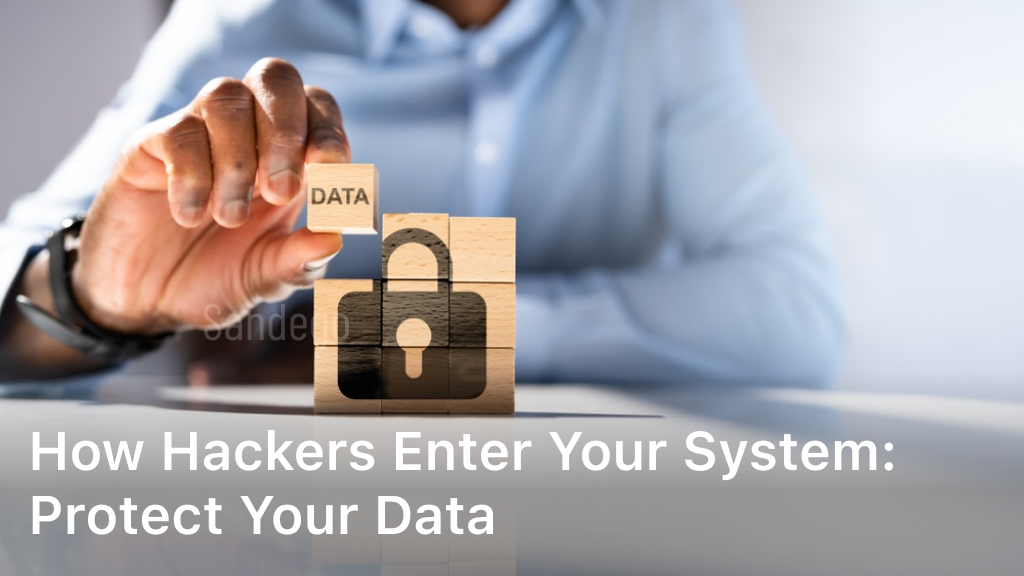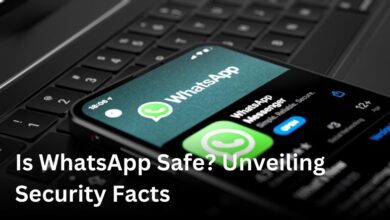In today’s highly digital world, it’s no secret that cybersecurity threats are on the rise. Cybercriminals use various methods to breach systems and gain unauthorized access to sensitive information, and it’s essential to protect your data against these vulnerabilities. Understanding how hackers enter your system is the first step in safeguarding your information and preventing data breaches. In this article, we’ll explore the different techniques used by hackers, as well as strategies to prevent unauthorized access and mitigate the risk of cybersecurity threats. Join us as we delve deeper into the key challenges of network security and discover ways to keep your data secure.

Understanding Hacking Techniques
Knowing how hackers operate is essential in protecting your computer networks from unauthorized access. There are several common hacking techniques utilized by cybercriminals that put your system at risk of compromise. Understanding these hacking techniques is crucial to safeguard your system from potential attacks.
Social engineering, for example, is a common hacking technique employed by cybercriminals to gain access to your computer network. By tricking individuals into revealing personal information, hackers can obtain the credentials required to breach a system. Other hacking techniques include SQL injection attacks, malware, and man-in-the-middle attacks. By staying abreast of these potential threats, you can take proactive measures to safeguard against them.
To effectively protect your system from hacking techniques, it’s important to understand the vulnerabilities in your system. Common vulnerabilities that cybercriminals look for include weak passwords, unpatched software, and lack of proper firewalls and security protocols in place. By addressing these vulnerabilities and taking proactive measures to strengthen your system’s security, you can reduce the risk of falling victim to hacking techniques.
Preventing Unauthorized Access
Unauthorized access to your system can lead to severe data breaches, causing lasting damage to your business. To prevent unauthorized access, you need to take active measures to keep intruders out. Strong passwords are the first line of defense against unauthorized access. Make sure to use a combination of uppercase and lowercase letters, special characters, and numbers to make your passwords stronger.
Two-factor authentication is another security measure that can add a layer of protection against unauthorized access attempts. With two-factor authentication, users need to provide two forms of authentication before gaining access to the system.
Your network security infrastructure is essential in protecting your system from unauthorized access. Firewalls and intrusion detection systems can help identify and block unauthorized access attempts. Additionally, encrypting sensitive data in transit and at rest can prevent unauthorized access to your network.
By taking these precautions, you can significantly reduce the risk of unauthorized access to your system, safeguarding your data from cybersecurity threats and system vulnerabilities.
Recognizing Phishing Attacks
Phishing attacks remain a top cybersecurity threat, and hackers frequently use this method to exploit system vulnerabilities by tricking individuals into divulging sensitive information unintentionally.
Common Types of Phishing Attacks
- Spear Phishing
- Whaling
- Email Spoofing
- SMiShing
It’s essential to stay vigilant when it comes to recognizing phishing attacks to prevent becoming a victim. Below are some tell-tale signs to watch out for:
Red Flags of a Phishing Attack
- The sender’s email address seems suspicious or unfamiliar
- The email contains suspicious attachments or links
- The message contains poor spelling and grammar
- The email seems too good to be true, promising rewards or prizes
Being aware of these common phishing attack tactics and red flags will help you recognize and avoid phishing attempts, thus strengthening your system security and minimizing system vulnerabilities.
Mitigating Malware Infections
Malware infections can lead to severe consequences such as data breaches and compromise the overall security of your system, making it vulnerable to cybercriminals.
Use Anti-virus Software
One of the most effective ways to mitigate the risk of malware infections is to install anti-virus software that can detect and eliminate any threats. Ensure that your anti-virus software is updated regularly to guarantee it has the latest malware definitions and can identify newly discovered threats.
Limit User Access
User access control can help to limit the spread of malware infections among your systems. By limiting user permissions, you can prevent unauthorized installation and downloads of software that may contain malware or harmful scripts.
Implement a Firewall
A firewall can help to filter out any malicious traffic attempting to enter your system, making it more challenging for hackers to gain unauthorized access.
Stay Vigilant Against Phishing Attempts
Phishing attacks are often used by hackers as a means to deliver malware to your system. Educate yourself and your team on how to recognize phishing attempts and avoid clicking on suspicious links or downloading attachments from unknown senders.
By implementing these strategies, you can reduce the risk of malware infections and protect your system against vulnerabilities that may compromise your system’s security and harm your data.
Strengthening Network Security
A sound network security infrastructure is key to any system’s protection against cyber threats. In today’s digital age, where data breaches and unauthorized access pose serious threats to our security, ensuring you have implemented the right measures is essential.
Firewalls
Firewalls are an essential component of any network security system. They monitor incoming and outgoing network traffic and block or permit specified data packets based on a set of security rules. This ensures that only authorized traffic can enter and leave your network, preventing unauthorized access to your system.
Intrusion Detection Systems
An intrusion detection system can monitor network traffic to identify and alert any malicious activities taking place within your system. This allows you to take immediate action to prevent any damage or data loss caused by such activities.
Encryption
Encryption is an effective technique to protect sensitive data from unauthorized access. By encrypting data in transit, you ensure that it cannot be intercepted or read by attackers. Encryption is particularly crucial when transmitting sensitive data like financial information or personally identifiable information (PII).
By implementing these measures, you can ensure that your network infrastructure is robust and secure, providing a reliable barrier against any cybersecurity threats or system vulnerabilities.
Conclusion
In today’s digital landscape, protecting your data from cybersecurity threats and unauthorized access is crucial. By implementing the strategies and best practices discussed in this article, you can significantly reduce the risk of a data breach and safeguard your systems against malicious attacks.
Remember to remain vigilant and stay informed on the latest cybersecurity threats and trends. Keeping your network security infrastructure up-to-date and investing in employee training can go a long way in strengthening your system’s security.
In summary, the key to protecting your data is to be proactive and take the necessary precautions to mitigate the risk of a potential attack. By doing so, you can rest easy knowing that your sensitive information is safe and secure.
FAQ
How do hackers enter your system?
Hackers enter your system through various methods such as phishing attacks, malware infections, exploiting system vulnerabilities, or gaining unauthorized access to your network.
What are some common cybersecurity threats?
Common cybersecurity threats include malware, ransomware, phishing attacks, password breaches, social engineering, and insider threats.
How can I protect my system against unauthorized access?
To protect your system against unauthorized access, it is crucial to implement strong passwords, enable two-factor authentication, keep your software up to date, use a firewall, and regularly monitor your network for any suspicious activity.
How can I recognize phishing attacks?
Phishing attacks can be recognized by looking out for suspicious emails, messages, or websites that request personal information or financial details. It’s essential to verify the source and be cautious before sharing sensitive information online.
How can I mitigate the risk of malware infections?
To mitigate the risk of malware infections, practice safe browsing habits, avoid downloading files from untrusted sources, regularly update your antivirus software, and conduct regular system scans to remove any potential threats.
What measures can I take to strengthen network security?
To strengthen network security, you can implement firewalls, use intrusion detection and prevention systems, regularly update your network equipment, encrypt your data, and enforce secure communication protocols.






